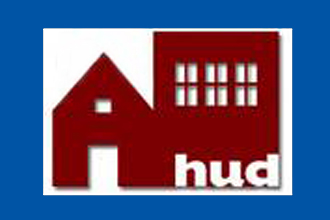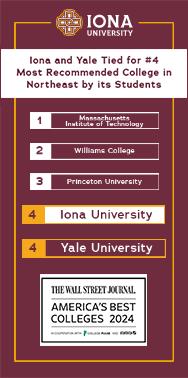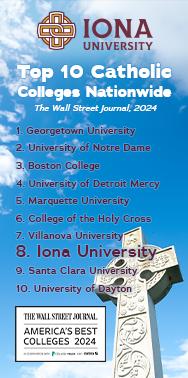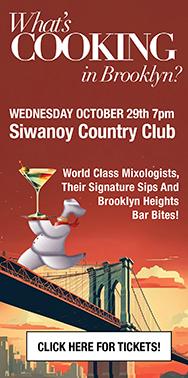Doubt Cast on HUD’s Fairness in Withholding $25 Million from Westchester County

By Ned McCormack, Communications Director, Westchester County
Jun. 29, 2016: Recent statements by a senior HUD official to the Westchester County Board of Legislators ("BOL") call into question whether the agency ever read the documents it used as the basis to withhold more than $25 million in federal grants from Westchester, money that was supposed to go to some of the county's neediest residents.
Incredibly, Holly M. Leicht, HUD's regional administrator, told the BOL on June 6 that the agency was unaware of watershed issues in Westchester until 2014, despite the fact that the county, whose northern towns contain the reservoirs holding drinking water for eight million New Yorkers, had been sending information to HUD for decades that detailed the watershed issue.
"For years HUD has justified withholding tens of millions of dollars from Westchester because it claimed the county had failed to produce an adequate analysis of impediments to affordable housing," said County Executive Robert P. Astorino. "Now comments by HUD's regional administrator call into question whether the agency was even reading key documents. It is hard to know whether HUD has been lying to the public, is incompetent, or both. In any case, HUD owes Westchester some honest answers to explain its behavior."
The controversy stems from the 2009 affordable housing settlement reached between former County Executive Andrew Spano and the federal government. Under the terms of the agreement, the county must develop 750 units of affordable housing in 31 mostly white communities by December 31, 2016. The county has exceeded each of its annual benchmarks and expects to reach the full goal at the end of the year.
In addition, the settlement calls on the county to submit an analysis of impediments ("AI") to fair housing "deemed acceptable by HUD." The county has submitted eight AIs to HUD, which have totaled thousands of pages and have been the most comprehensive documents of this kind ever submitted to the agency by a county.
In each case, HUD has rejected them without presenting evidence to refute the county's analysis and used the rejections as justification to withhold roughly $26 million in federal funding from the county.
The comments by Administrator Leicht call into question whether HUD properly reviewed the documents or, in fact, even read them. The county's 2010, 2011, and 2013 AIs all detailed watershed issues.
But on June 6, Administrator Leicht said that HUD was unaware of any watershed issues until 2014, when the monitor assigned to the settlement did a report on Pound Ridge. She told the BOL: "So we did not know, honestly didn't know, that you all were dealing with these water constraints until the monitor went and worked with Pound Ridge on the charrette and all this came up and then that came back to us and we said, 'Wow, that's good to know!' I mean, even some of the people involved in the litigation never had heard that before."
Deputy County Executive Kevin J. Plunkett sent a letter to Administrator Leicht on Friday, June 17, 2016, expressing the county’s amazement and outrage at HUD's behavior. "Watershed issues have been a consistent part of the county's AIs and consolidated plans for decades," Plunkett wrote. "For HUD not to know this, one must conclude either the agency never read the county's AIs, or worse, ignored critical information presented to it. Your comments are strong evidence that HUD viewed the AIs not as a planning tool, but as a weapon to seek legal and financial sanctions against the county. The facts speak for themselves. HUD repeatedly rejected the most comprehensive AIs ever submitted to the agency and then used those rejections as the basis to withhold more than $25 million in funding, money that was slated to help some of Westchester's neediest residents. Now we learn those AIs were never given a fair or professional review."
HUD's awareness of watershed issues in Westchester should date back to the submission of the county's 1995 Consolidated Plan. The document emphasized that the county led the charge in advocating for a balanced approach to watershed management and discussed strategies for addressing watershed issues, including prioritizing funding for infrastructure improvements.
In his letter, Plunkett asked: "How does the agency that wants the power to dismantle local zoning codes across the United States explain its ignorance of watershed issues in Westchester when the county has been sending HUD detailed analysis on the topic for more than two decades?"
The dispute over the AIs has to do with HUD's refusal to accept the county's fact-based analysis, supported by the Pace University Land Use Law Center, that found no evidence of exclusionary zoning based on race. In an attempt to get the county to change its conclusions, HUD withheld more than $25 million. Despite the financial intimidation by HUD, the county has stuck by its analysis.
Plunkett concludes his letter saying that HUD's "bureaucratic incompetence, or worse, vindicate the county's position to defend local zoning and resist federal overreach in areas best left to local communities and their elected representatives."
Government & History Directory
Bronxville is a quaint village (one square mile) located just 16 miles north of midtown Manhattan (roughly 30 minutes on the train) and has a population of approximately 6,500. It is known as a premier community with an excellent public school (K-12) and easy access to Manhattan. Bronxville offers many amenities including an attractive business district, a hospital (Lawrence Hospital), public paddle and tennis courts, fine dining at local restaurants, two private country clubs and a community library.
While the earliest settlers of Bronxville date back to the first half of the 18th century, the history of the modern suburb of Bronxville began in 1890 when William Van Duzer Lawrence purchased a farm and commissioned the architect, William A. Bates, to design a planned community of houses for well-known artists and professionals that became a thriving art colony. This community, now called Lawrence Park, is listed on the National register of Historic Places and many of the homes still have artists’ studios. A neighborhood association within Lawrence Park called “The Hilltop Association” keeps this heritage alive with art shows and other events for neighbors.
Bronxville offers many charming neighborhoods as well as a variety of living options for residents including single family homes, town houses, cooperatives and condominiums. One of the chief benefits of living in “the village” is that your children can attend the Bronxville School.
The Bronxville postal zone (10708, known as “Bronxville PO”) includes the village of Bronxville as well as the Chester Heights section of Eastchester, parts of Tuckahoe and the Lawrence Park West, Cedar Knolls, Armour Villa and Longvale sections of Yonkers. Many of these areas have their own distinct character. For instance, the Armour Villa section has many historic homes and even has its own newsletter called “The Villa Voice” which reports on neighborhood news.
Link to Village of Bronxville One Square Mile Monthly Newsletter
Village of Bronxville Administrative Offices
337-6500
Open 9:00am - 4pm excluding holidays and weekends
Bronxville Police Department
337-0500
Open 24 hours
Bronxville Parking Violations
337-2024
Open 9:00am - 4pm excluding holidays and weekends
Bronxville Fire Deparment
793-6400


















